Aftershock warning after 5.9 earthquake tremor felt across Melbourne, regional Victoria
Aftershocks have continued to rock Victoria after Wednesday’s record-breaking earthquake — and more are tipped to come.
Victoria
Don't miss out on the headlines from Victoria. Followed categories will be added to My News.
Victorians in the state’s northeast have felt another tremor after a 5.9 magnitude earthquake on Wednesday.
A 2.8 magnitude tremor was recorded at 12.09pm, lasting about 20 seconds, 10km underground at Rawson, east of Melbourne, near the site of the original quake.
Geosciences Australia geophysicist Hadi Ghasemi said more aftershocks were likely in the coming months.
More than 10 shocks have now registered in the aftermath of the major quake which was detected as far away as Adelaide, Canberra and Launceston.
Victoria could experience more aftershocks but they are unlikely to be widely felt.
The first aftershocks happened just 10 to 15 minutes after the earthquake and had magnitudes of 3.5 and 4.1.
The larger of these two rumbles were reported by more than 530 people, while the original tremor was felt by more than 41,000.
Six more aftershocks were recorded throughout the day in the Mansfield area, all with smaller magnitudes of 2.4 to 3.2.
The smallest of the aftershocks were felt up to 50km away.
The last recorded aftershock happened about 6pm on Wednesday evening and was only reported by 11 people.
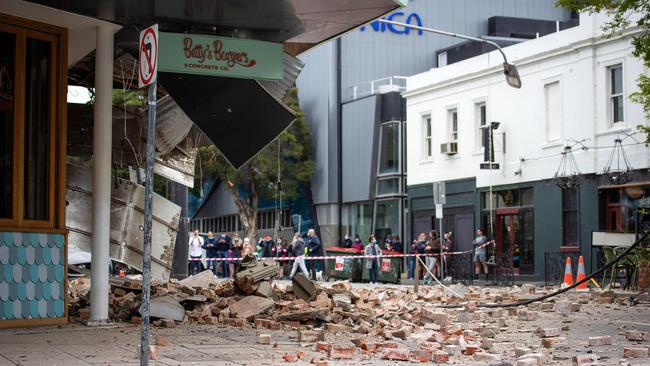
Senior duty seismologist Hugh Glanville said the aftershocks were felt over a much smaller area.
“The 4.1 magnitude aftershock was felt by a much smaller area, maybe a couple of hundred kilometres, but it was not felt any further than that. Magnitudes of 2.5 were only felt around 50km away,” Mr Glanville said.
The Geoscience Australia seismologist said there could be more aftershocks in the Mansfield area near the quake’s origin.
“After an earthquake you get most aftershocks straight away then they trail off,” Mr Glanville said.
“There could be more today. We are expecting magnitude twos, possibly three or four, given the current pattern.”
On Wednesday the 5.9-magnitude tremor rocked homes, rattled windows and sent workers scurrying for the fire stairs when it hit at 9.15am, reverberating for about 30 seconds.
Stock fell from supermarket shelves and businesses right across the state faced disruption to their operations.
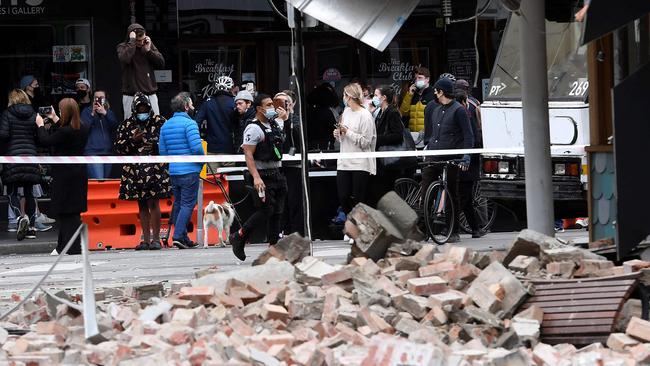
Another six smaller aftershocks, ranging from 2.1 to 4.1 in magnitude, were recorded later in the morning.
Vibrations were felt as far as Adelaide, Canberra and even Launceston as the shockwaves rolled out from the epicentre 10km underground in the Gaffneys Creek-Woods Point region, just south of Mansfield, 115km northeast of Melbourne.
State Emergency Management Commissioner Andrew Crisp warned that aftershocks were likely but unlikely to be as severe as the initial jolt.
The worst damage was recorded at the Betty’s Burger’s building in Chapel St, Windsor, where debris spilt on to the footpath and the roads below.
Most other damage was minor, with cases of crumbling brick chimneys, cracked walls and internal breakages recorded in homes across the city. Residents also reported birds falling silent as the tremor rumbled through the suburbs.
Victorian SES chief officer Tim Wiebusch said more than 108 calls for help were made to the service, mostly for help with building damage.
No one had been reported as injured.
“If the earthquake occurred in a densely populated urban area, it would have been a different result,” Mr Wiebusch said.
Seismology Research Centre senior seismologist Wayne Peck confirmed that the quake was the biggest recorded in Victoria since such events were measured.
Australia’s most deadly quake, on December 28, 1989, in Newcastle had a magnitude of 5.4. Because its epicentre was close to urban areas, the disaster killed 13 people, injured more than 160 and left a $4 billion damage bill.
“We’re fortunate it happened near Woods Point. It’s a much more remote area than Newcastle was,” Mr Peck said. The previous strongest quake recorded in the state was at Mt Hotham in May 1966 and had a magnitude of 5.7.
Power was lost to more than 35,000 Victorian homes in metropolitan Melbourne and the northeast of the state. Most were back online by midafternoon.
All Victorian magistrates’ courts were advised to evacuate and remain empty for an hour after the earthquake.
“It’s not a bad job but I don’t want to die for it,” a Bendigo magistrate said as he rushed out of the courtroom.
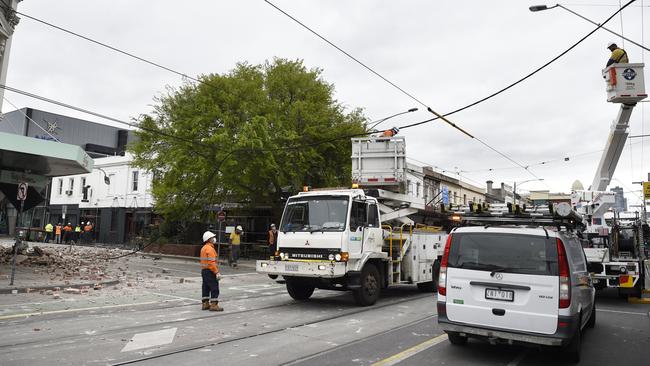
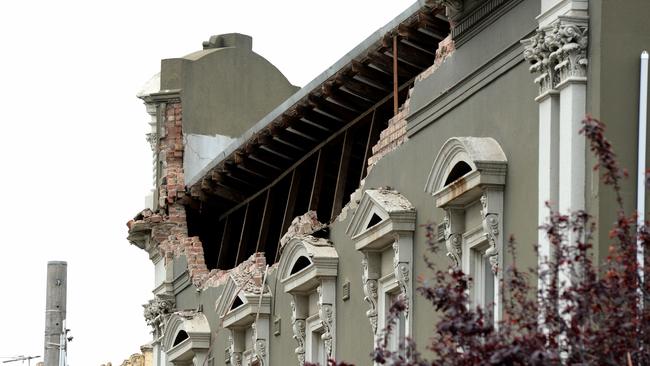
Collins Square at Docklands was evacuated when the quake rattled the 33-storey building. One worker said the building began to shake and she considered diving under the desk.
Another employee said they thought “a truck had hit the building”. Another city worker said they were on the first level of a building and said that concrete pillars “moved six inches”.
“All the buildings were moving, I s--- myself,” the worker said.
Deputy Premier James Merlino said buildings had been damaged in Mansfield, while the Beechworth hospital lost power. Helicopters were dispatched to conduct aerial surveillance for any further damage.
One of the crosses on top of St Patrick’s Church in Wangaratta fell to the ground.
Mr Wiebusch urged residents to remember to “drop, cover and hold” in the event of any future shocks.
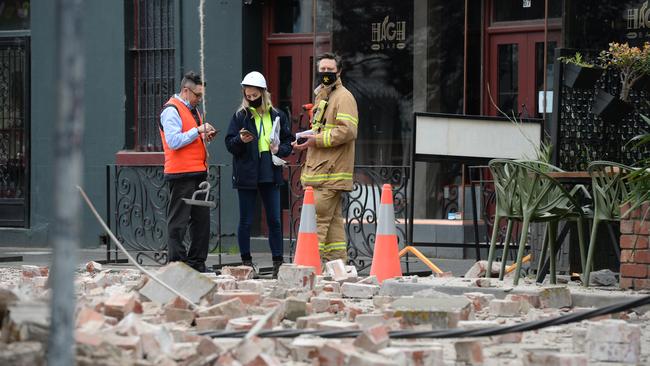
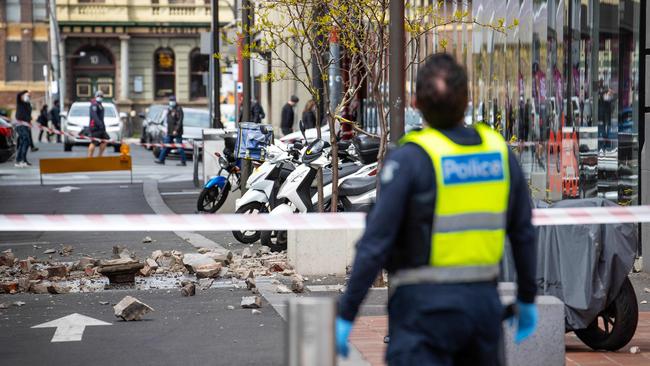
“It’s important to remain calm, but vigilant. Aftershocks can continue to occur for some time after the main earthquake, if you are located in Victoria, you need to know what to do,’’ he said.
“Expect aftershocks, and ensure to stay away from damaged buildings and other hazards.”
Deputy chief health officer Deb Friedman confirmed that positive Covid-19 cases, and people who were in quarantine or isolation, could leave their homes if the structure became unsafe.
“People’s safety always comes first,” Professor Friedman.
“If they need to leave the premises of where they are, we just ask them to please remember to take a mask, but their safety comes first and we understand there may be reasons why people may need to leave the place that they were previously isolating.”
WHAT CAUSED DRAMATIC QUAKE
The dramatic tremors that rocked homes and buildings in Melbourne was likely caused by Australia’s continent edging north and crunching into Asia Pacific nations.
Curtin University’s structural geologist, Professor Chris Elders, said Australia is moving away from Antarctica at 7cm a year — rapid speed in geology terms — unsettling plates surrounding the nation and forcing the earth under our feet to move at regular intervals.
“The Indian Ocean is getting bigger and we’re colliding with Indonesia, Timor and New Guinea to the north,” he told NCA NewsWire.
“So all those boundaries produce stresses that get transmitted through the crust and then when they hit a weak fault, the fault moves and causes the earthquake.”
Australians are more acquainted with seasonal disasters, such as fires, floods and cyclones, with earthquakes closely linked with California, Japan and the Pacific.
But the Curtin University academic said shakes across the country were surprisingly frequent.
He said quakes of this magnitude recorded in Victoria on Wednesday occurred about every five years, but there is a shake of three or more magnitude detected once a week.
“If you look at a map of the distribution of earthquakes, they’re occurring in all the states,” Prof Elders said.
“That is a reflection of the fact that Australia is a very ancient bit of continental crust. So there’s lots of fault lines and lines of weakness that kind of fail when the stresses build up.
“It’s a combination of the plate boundaries all the way around Australia, and the abundance of lines of weakness within the ancient Australian crust can fail and cause earthquakes to occur.”
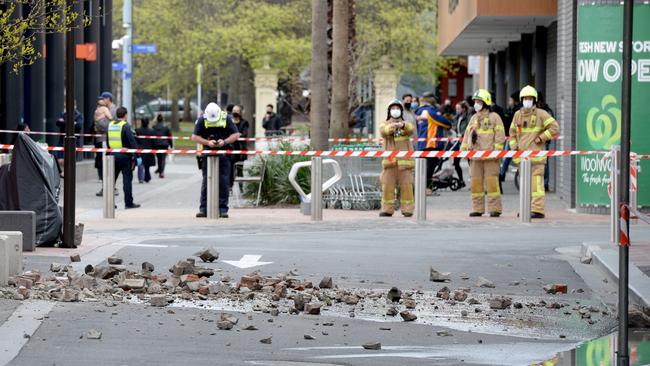
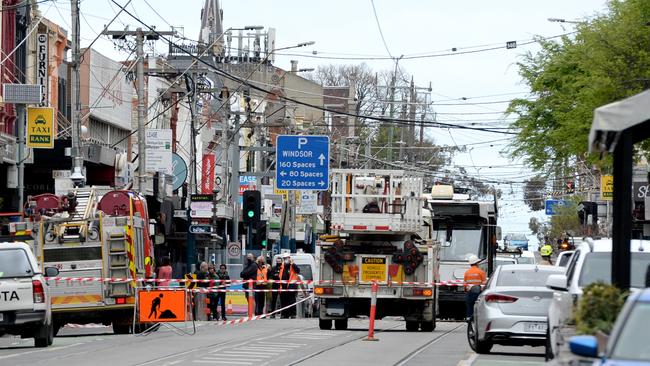
RUSH OF INSURANCE CLAIMS
The nation’s biggest general insurer has received more than 430 claims related to the Victorian earthquake.
It comes as many of central Melbourne’s 19th-century buildings are checked for damage and potential collapse in the aftermath.
Older structures in inner Melbourne were identified as most vulnerable, prompting probes from council officers and building inspectors.
Insurance Australia Group on Thursday said it was too early to determine the full financial impact of the event as customers continued to contact it.
The insurer had logged 435 personal and commercial claims related to the earthquake across its various brands by 9am Thursday.
IAG chief Nick Hawkins said Covid restrictions could result in it taking longer than usual for commercial customers to identify damage.
“Our dedicated major event team is in place all year round to ensure we’re as well prepared as possible to support our customers following a natural disaster,” Mr Hawkins said.
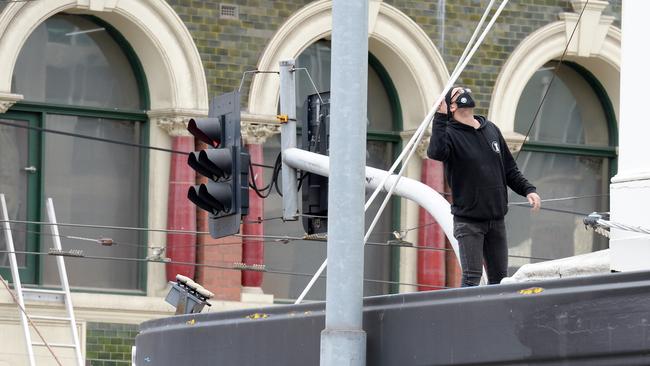
“We encourage our customers who have suffered damage to their homes or properties to contact us to lodge their claim, so we can provide immediate support such as emergency make-safe repairs and temporary accommodation, as quickly as possible.”
IAG’s key brands in Victoria include RACV and CGU.
Covid vaccination and testing clinics being run out of the Prahran Town Hall, built in 1861, and Malvern Town Hall (1886) were closed as a precaution with no structural damage evident.
They have since reopened on Thursday and are operating as normal after being given the all-clear late Wednesday.
A City of Melbourne spokesman said homes and businesses across the council area had escaped relatively unscathed.
A brick chimney crumbled on top of a house in Kensington, with SES crews called to make the property safe. Damage was also reported to homes in Ascot Vale, Prahran, Parkdale, Elsternwick, West Melbourne and Balwyn.
The City of Port Phillip closed its council-run childcare centres, libraries and town halls as a precaution.
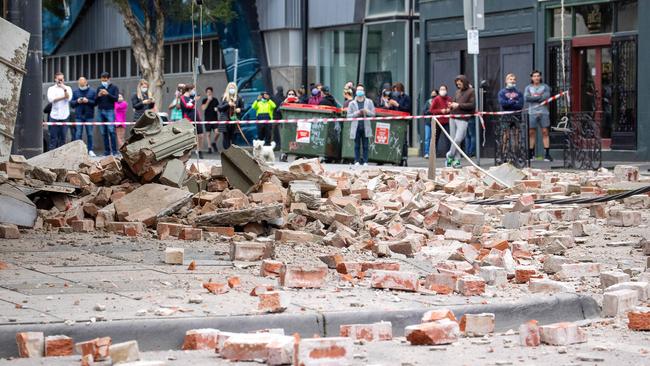

HOW QUAKE FELT AT EPICENTRE
Victorian High Country legend Charlie Lovick was out on his horse on Wednesday morning when a 5.9 magnitude earthquake hit the area sending shakes across southeast Australia.
“I’ve never experienced anything like that in my life,” said the Merrijig cattleman, who was Master of Horse for the film The Man from Snowy River.
“The horse shook that much, a lesser rider would have fallen off.
“I thought the horse was having a hissy fit and he thought I was having a hissy fit, too.”
Read the full story here.
FLASH ON SCREEN FRIGHTS AND EXCITES
The first clue National Earthquake Alert Centre received about Victoria’s ground-shaking event was when a computer screen began flashing.
There is no way to accurately predict earthquakes, so the federal government’s geoscience team cannot know about a tremor until a seismometer records it.
Geoscience Australia seismologist Spiro Spiliopoulos said the expert on duty on Wednesday morning would have seen their screen light up with a “large event”.
“Soon after that they would have located it automatically, it would have flashed up in front of them, and then they have to look at it and quickly confirm that it’s a real event,” Mr Spiliopoulos said.

“We’ve got tools that allow us to send information to Emergency Management Australia and the state emergency centres, then we post it online to make it publicly available.”
Most of the time, the alert centre is reasonably quiet.
A team of eight seismologists, rostered on 24 hours a day, keep a constant eye on tremors around the country and, more frequently, off the Australian coastline.
But there was a bit more excitement on Wednesday.
It was both a “frightening” and “exciting” morning for Mr Spiliopoulos – being part of the team to investigate the biggest earthquake on record in Victoria.
The job, however, was made somewhat more difficult by the fact only one person was at the alert centre, which otherwise would have been a hive of activity, while everyone else worked from home.
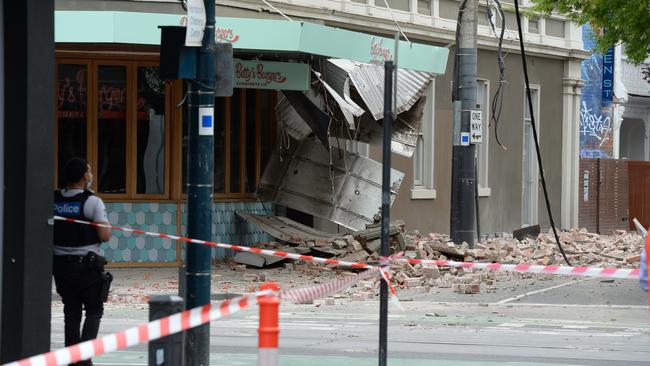
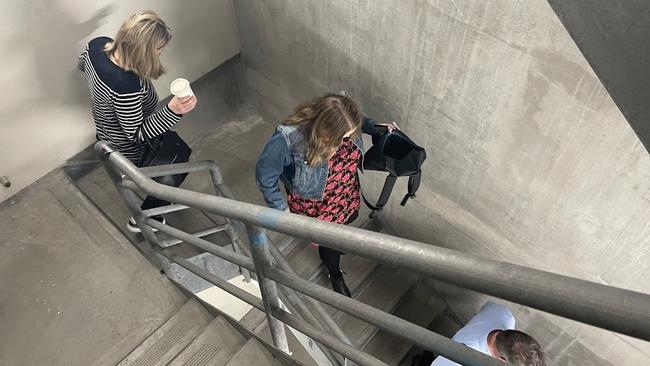
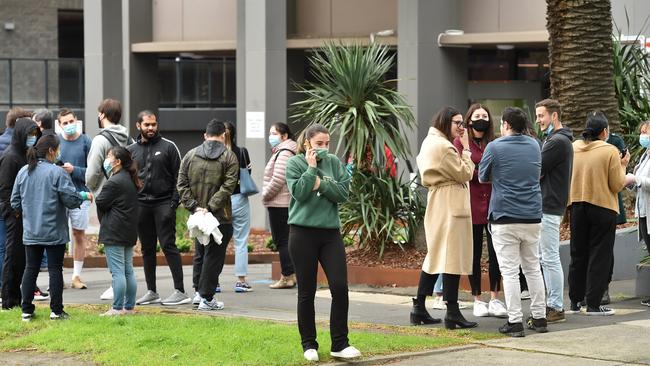
“First it was a surprise because it was a rare event,” he said. “Then it became quite, what’s the word – I won’t say chaotic but it became terribly busy as I tried to get on to where it was and how big it was and what people were feeling and stuff like that.”
Such large earthquakes come with a short but intense buzz at the alert centre.
“The thing with earthquakes is that they come out of nowhere,” he said.
Most of the alert centre’s day-to-day work involves monitoring earthquakes in the Indian and Pacific oceans to assess whether they could pose any kind of tsunami threat to Australia.
Mr Spiliopoulos said researchers would now deploy specialist equipment to the Mansfield area to pick up aftershocks.
An engineering group would also be sent out to assess how much damage the shake caused.
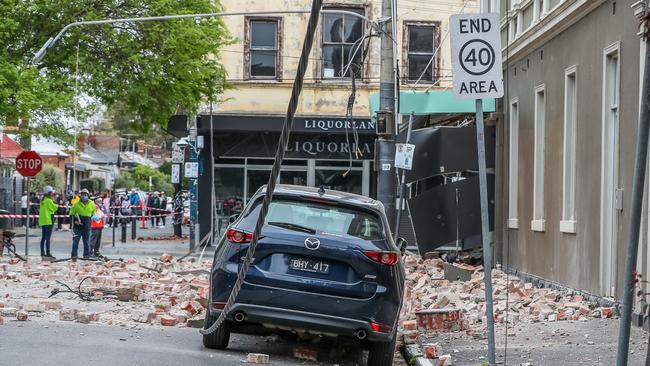
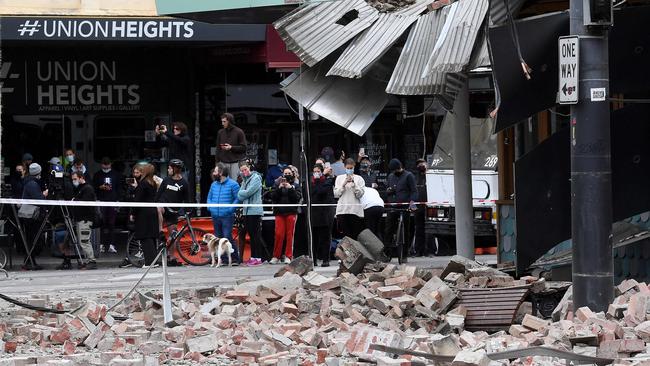
HOW THE WORLD REPORTED ON QUAKE
The rare and powerful earthquake that rocked Melbourne has been widely reported by the world’s media as one that largely left Australians “surprisingly unfazed”.
The BBC reported that “the Australian city of Melbourne experienced its strongest earthquake in more than a century on Wednesday – but many people appeared surprisingly unfazed”.
“One resident said he thought the 5.9 magnitude quake was his neighbours doing a ‘high intensity workout’,” it said.
“Another leapt up to make sure his drinks were not spilt.”
The Daily Mail UK reported that “Australians have flocked to social media with hilarious reactions after a 5.8 magnitude earthquake rocked Melbourne and the nation’s southeast”.
Read the full story here.




